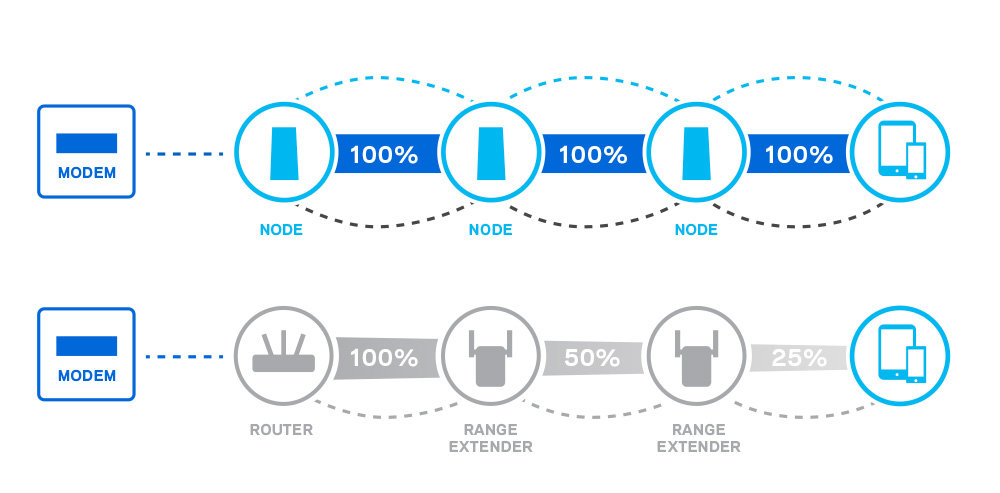You have a computer network with the latest Wi-Fi hardware and a 100 Mbps Internet connection. But for some reason, you are suffering from buffering when you try to stream video in the main area. You have called your Internet Service Provider (ISP) and everything seems fine, so what is wrong. Generally the issue is with the Wi-Fi. It is not set up efficiently for a mesh Wi-Fi system.
Mesh Wi-Fi or Whole Home Wi-Fi systems consists of a main router that connects to a series of satellite nodes, placed around your premises for full wireless coverage. These nodes share the same SSID and password to form a seamless Wi-Fi network
Typically Wi-Fi mesh networks are used to ensure consistent Internet access across the premises.
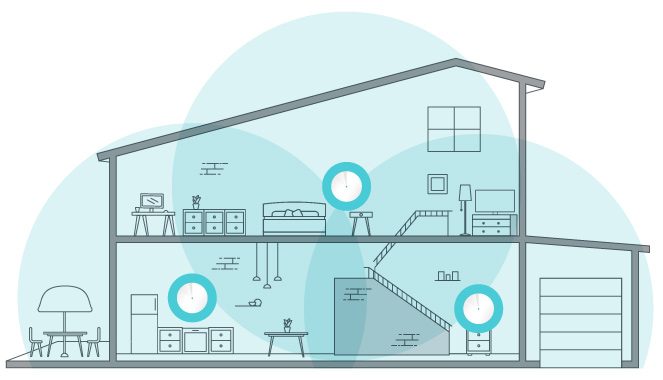
What’s Slowing Down Your Network?.
Wi-Fi systems suffer from longer distances found in larger premises, where the ISP supplied router is only capable of reaching as far as the first room, but not to the distant office ,room or garage. Due to weakened signals further interference from other devices could also be the culprit, whether it’s your microwave, cordless phone, or security system.
The weakened signal or Wi-Fi dead spots could be the result of physical obstructions. Simple things like the floor, doors, and walls of your premises can come between your Wi-Fi device and the router, especially if they’re made of metal, brick, or concrete.
If you live in close quarters with other Wi-Fi networks as in an apartment building or office blocks the problem increases.
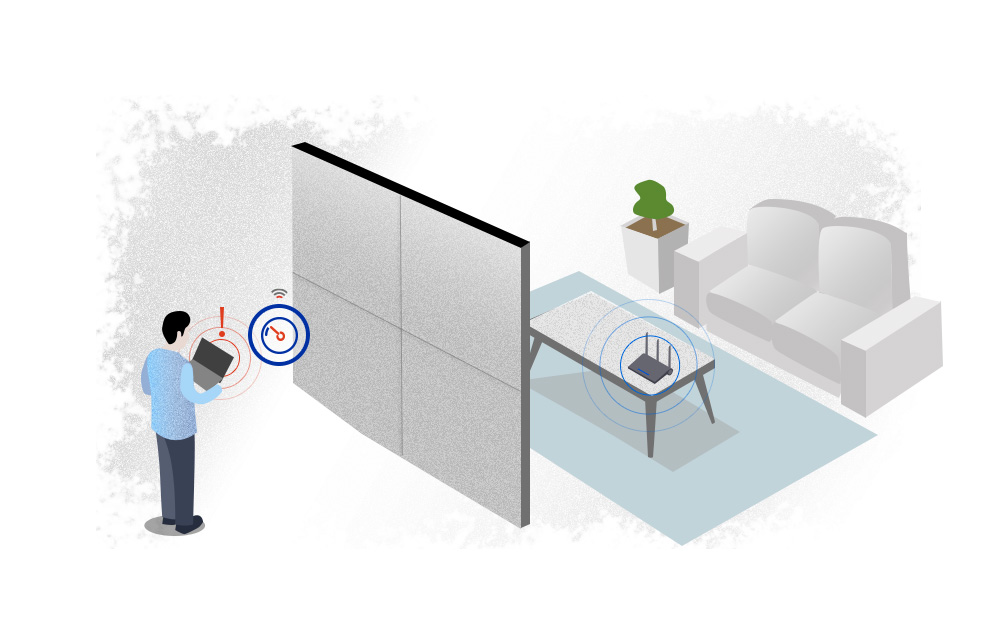
Blanketing Your Home with WiFi
A better solution is Wi-Fi that works with your network design, instead of against it. Think of a standard router like a speaker. You could be playing music loudly in the front of your home, but the office in the back will only hear a faint echo. A standard router works the same way, you can only move so far from it before the signal starts to weaken and eventually it is going to cut out altogether.
That’s how whole Wi-Fi or mesh networks work, with multiple nodes installed around your premises so you’ve got solid Wi-Fi coverage from one end to the other.

Modular Expansion
A modular mesh whole home WiFi system is flexible and scalable, giving you a customizable method of expanding your WiFi without the need to add range extenders, which have performance and ease-of-use issues. It’s just like installing lighting fixtures to illuminate your home; you can place your nodes anywhere in your home. You choose which rooms need the coverage, and when it’s time to add more to extend the signal even further.
Easy Guided Set Up and Management
Most mesh systems use a mobile app for a guided setup. The app walks you through the set-up process for optimal placement of nodes throughout your home. It will help you find dead zones, so you can place nodes in those areas that otherwise wouldn’t receive Wi-Fi coverage. The mobile app also incorporates some cool features to help you manage your Wi-Fi, such as parental controls, device prioritization, guest access, and more.
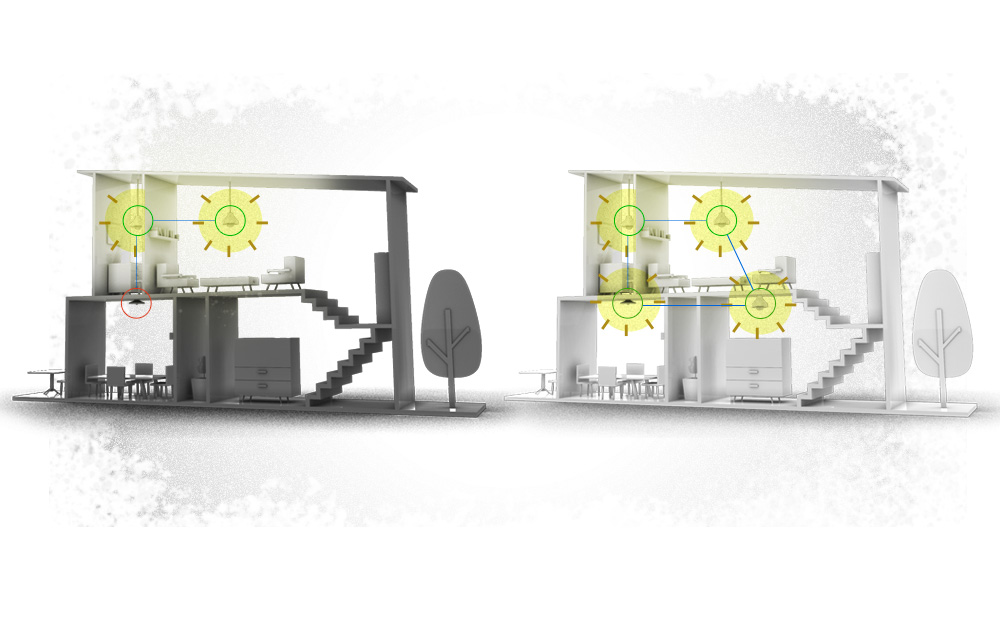
Standout Features of the Whole Home WiFi System
Wired and Wireless Expansion
In a modular system, there’s one node connected to your modem that acts as a router. Each additional node finds the best channel and path to wirelessly connect to the previous one, creating a seamless and reliable WiFi connection throughout your entire home.

However, if your home is already wired with Ethernet cables in every room, some mesh systems can still connect the nodes together using an Ethernet cable to create a whole home Wi-Fi system. Even using the wired option, you’ll still be able to expand your signal to hard-to-reach areas such as the garage.
One Network and Seamless Roaming
The name “mesh network” itself implies that every component of your WiFi system is working together, and seamless roaming is a perfect example of that. When you use a router and range extender combination, you have to switch between the networks manually as you move from one coverage zone to the other.
But with seamless roaming, you only have one network with one name and password—that means that as you move about your home, you’ll never have to manually switch from one network to the other. So go ahead, stream video in the living, kitchen, or bedroom without worrying about buffering or a dropped connection.
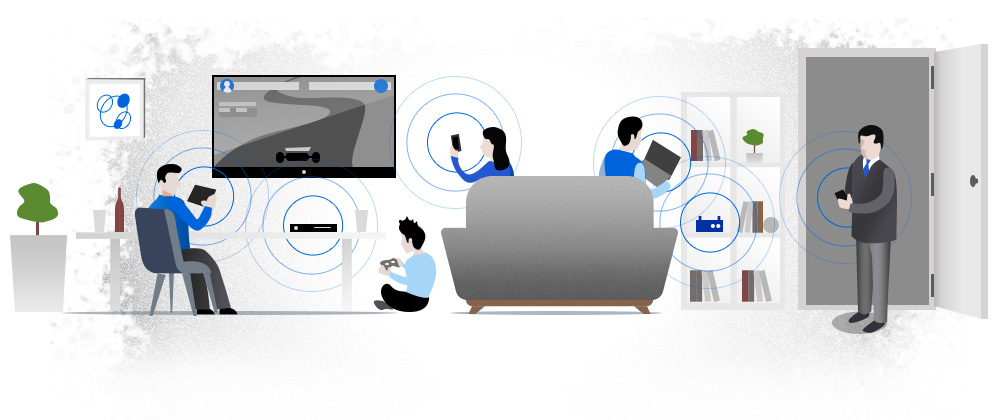
Guest Network
Using a guest network keeps your primary WiFi network safe from intrusion, blocking outside users from accessing your personal data. But never fear, you can still provide Internet access to your dinner guests or babysitter without compromising the security of your main network. Simply adjust the guest settings using your mobile management app.
Why Not Use a Range Extender?
Range extenders are certainly effective when it comes to increasing the range of your router, but they do so at the expense of Wi-Fi performance, which gets cut in half.
In a large space where Wi-Fi struggles to reach every corner, a range extender can actually diminish the overall performance of your network, creating a bottle neck effect. You might also experience connection issues when jumping from the router to the extender, because you will need to switch networks manually. For example, even when standing next to the range extender, you can still experience dead zones or slowdowns if you have not manually changed your device over from the router’s signal. These two separate networks also have different names and interfaces, which can be a serious hassle.
